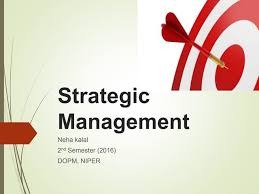In the fast-changing world of business, having a good strategic plan is super important for long-term success. Bill Canady, a well-known expert in strategy management, shares really helpful insights on how to create effective strategies that help businesses reach their aims.
This guide will help you understand the key parts the strategy management process. It focuses on doing a situation analysis, using strategic planning frameworks, & understanding the business planning process.
How to Do a Situation Analysis for Strategic Planning
First things first—a situation analysis is really the backbone of any strategic plan. It involves looking at where your business stands right now and what’s going on around it so you can find out strengths, weaknesses, opportunities, & threats (SWOT). Bill Canady says that doing a detailed situation analysis helps businesses see their strong points and what’s happening in the market.
Steps for a Situation Analysis:
Internal Analysis: Look at your company’s resources, skills, and how it performs. Find strengths to build on & weaknesses to fix. Tools like value chain analysis & core competency analysis can help.
External Analysis: Check out what’s happening in your industry and look at trends. Use frameworks like PESTEL (Political, Economic, Social, Technological, Environmental, Legal) analysis & Porter’s Five Forces to figure out outside factors affecting your business.
SWOT Analysis: Bring together what you found from internal and external analyses to create a full SWOT analysis. This helps in spotting strategic options and prioritizing actions based on what’s unique about your business.
How a Strategic Planning Framework Can Help You Reach Your Big Goals
A strategic planning framework gives you a clear way to set & achieve your business goals. Bill Canady highlights that having this kind of framework keeps everyone on the same page and moving towards the same targets.
Key Parts of a Strategic Planning Framework:
Vision and Mission Statements: Clearly state your company’s long-term vision & mission. These statements guide all your important choices.
Goal Setting: Set clear goals that are specific, measurable, achievable, relevant, & time-bound (SMART). These goals should match your vision & mission so they provide a clear path to success.
Strategy Formulation: Create strategies that use your strengths & opportunities while also tackling weaknesses and threats. Bill Canady suggests using tools like the Balanced Scorecard for a rounded view covering financials, customers, internal processes, plus learning and growth.
Implementation Plan: Lay out the steps you need to take to put your strategies into action. Don’t forget to assign tasks, set timelines, and manage resources wisely. A good implementation plan makes sure everyone knows what to do to reach those big goals.
Monitoring & Evaluation: Keep an eye on how things are going toward your goals regularly. Key Performance Indicators (KPIs) can help check success & see if any adjustments are needed. This ongoing check-in allows you to make changes when necessary—to stay on track.
What is the Business Planning Process?
The business planning process is like a step-by-step way to define where a company is going and how it will use its resources to get there. Bill Canady points out how important it is to have a solid business plan—it serves as a roadmap for growth & helps attract investors too!
Steps in the Business Planning Process:
Executive Summary: Sum up the key parts of your business plan—like vision, mission, goals, & strategies—here! It gives readers an easy overview.
Market Analysis: Do some deep digging into who your customers are—look at demographics as well as market size and competition levels. Knowing your market well is crucial for making good strategies.
Company Description: Offer an overview of what your business is about—including its history & structure—as well as what makes it special compared to others.
Organization & Management: Describe how your company is organized and introduce who runs things. Share their roles and qualifications too!
Marketing and Sales Strategies: Lay out how you’ll promote & sell—what pricing strategy will you use? Make sure these align with overall business goals—Bill Canady says this keeps things consistent!
Product or Service Line: Explain what products or services you offer clearly! Discuss their benefits & stages in their lifecycle plus any R&D efforts.
Financial Plan: Show financial projections—including income statements and cash flow statements—and cover funding needs plus potential sources of money.
Appendix: Add any extra stuff that supports your business plan—like resumes or permits!
By sticking with these steps & following guidance from experts like Bill Canady businesses can build strong strategic plans that lead them toward success.
Conclusion
Strategic planning plays an essential role in navigating today’s complex business landscape. If businesses do thorough situation analyses and use solid strategic frameworks while following a systematic planning process—they can achieve wonderful goals! Bill Canady’s expertise serves as a fantastic guide for anyone looking to enhance their strategy management process and get ahead in competition!







